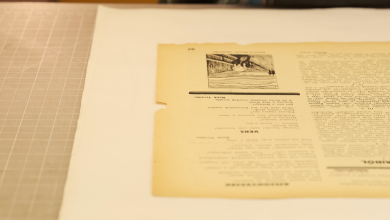A Luxurious Squash and Lamb Stew for the Holidays

When the Nigerian writer Yemisi Aribisala craves jollof rice, a West African staple, she doesn’t cook it. She asks her sister to send her a bowl. They live about an hour apart, so it is not a casual delivery. Nevertheless, this is how things must be. “Mine is simply not good enough,” Aribisala says.
On the other hand, “My sister can’t do stew like me,” she says. “She knows.”
Recipe: Miyar Taushe (Lamb and Squash Stew)
In the award-winning essay collection “Longthroat Memoirs: Soups, Sex and Nigerian Taste Buds” (2016), Aribisala, who lives in London, writes about food (which is to say about life) with punch, wit and a hawk-eye for detail. Against the romantic notion of how recipes are passed down through generations, she recalls the pressure of being taught how to wrap moin-moin (bean dumplings) in leaves so they wouldn’t leak in the steamer: “If you couldn’t wrap a moin-moin, you were in danger of becoming an incompetent woman and wife, an embarrassment to the house in which you were raised, perhaps even ineligible for marriage.” She adds, “This was probably too much cultural anxiety for a 10-year-old.”
A visual artist with two law degrees, Aribisala started blogging about food in 2009 for the Lagos-based newspaper 234NEXT (now defunct). Yet she writes in her book that she is not “the ideal Nigerian epicurean,” because she has never mastered measuring ingredients with old milk tins; because she lacks the “portly hoariness” that to fellow Nigerians would testify to “an intimate relationship with our food”; and because, however good a cook she is, she is not quite ‘olowo síbi — literally, spoons for hands — the name given to a person whose culinary gifts are so great that they can only be otherworldly in origin.
Nevertheless, readers responded to her food blog, writing in with gossipy notes about their own favorite dishes. Some of these were new to Aribisala, who grew up in Lagos in southwestern Nigeria and is less familiar with the cuisine of the north. She was intrigued by mention of miyar taushe, a stew of pumpkins, peppers, tomatoes and bones. She had often made stew with ground-up seeds from egusi, a type of gourd, but never saw a Nigerian dish that used the flesh of a gourd itself.
She consulted recipes in a few vintage cookbooks, including a stained, coming-apart-at-the-seams volume of the long-out-of-print “Maggi Family Menu Cook Book” series, a companion to the hit 1980s Nigerian TV cooking show. (It was sponsored by Nestlé, maker of Maggi bouillon cubes, 120 million of which are reportedly sold in West and Central Africa every day.) Then she went in search of a British equivalent to the Nigerian pumpkin. She tested a mashed-potato squash: delicious, with hints of brown butter, but blandly white, hardly appetizing. Butternut squash was more vivid. “The color makes me full just looking at it,” she says.
There was also the matter of finding the right meat. “The way they think about meat in this country is different,” she says. “We eat of course everything. Here people are very particular.” She ended up using lamb scrag, an inexpensive cut from the neck, tough enough to stand up to a long boil and with lots of bone to give depth and make an impression at the table. But bone-in lamb shank will do, too.
No substitute may be made for calabash nutmeg, however, which is nothing like regular nutmeg, whatever you may read online. It’s woodier and mustier, and if you detect a trace of sweetness, it may be simply your imagination, projecting the memory of that other nutmeg.
Aribisala simmers the lamb with chiles, slipped in the pot early, to calm them (although not entirely). When the stock is rich with marrow, it’s poured into a blender and returned to the pot to commingle with the butternut squash, also rendered velvet. She can still recall the wheeze of old-school blenders in Nigeria, left chugging for half an hour to get the job done, and the smell of burning as they died. “I cannot count the number of electric blenders I personally saw my mother destroy,” she writes.
The pot should be big enough that the stew reaches only halfway up, because it splatters. At the very end, for serving, a handful of spinach is briefly plunged into boiling water. “It’s more a rinse,” Aribisala says. “I like my spinach basically uncooked. Many people like it dead.”
Stew is a luxury because it demands what we seem to have the least of these days: time. You stand vigil while the lamb in the pot slowly comes undone and the butternut squash in the oven softens, its skin ready to cave in. You deliver to your guests bowls of tamed sun, hot, creamy, melty, thick and earthy-sweet.
“Will you make this for your sister?” I asked Aribisala. “Maybe,” she said. “For Christmas.”
Recipe: Miyar Taushe (Lamb and Squash Stew)



